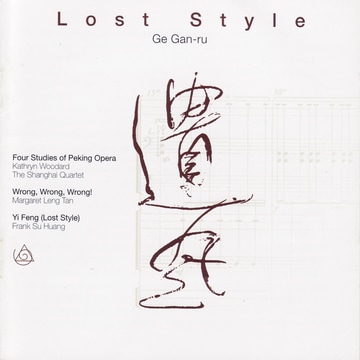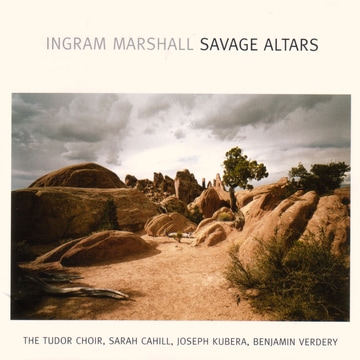|
Lost Style
Shanghai Quartet with Kathryn Woodard, piano Margaret Leng Tan, voice and self-accompanied toy orchestra Frank Su Huang, cello Emotionally gripping works, they both seduce and pummel the listener. --The New York Times The three compositions on Lost Style are indicative of the extraordinary compositional voice of Ge Gan-ru, China's first avant-garde composer. Born in 1954, Ge's life journey follows the now familiar path trodden by the generation of Chinese artists who came of age in the 1970's. As a teenager, he was repatriated to the countryside for re-education during the Cultural Revolution, then came the move to New York in the 1980's, a doctoral degree from Columbia University and since then, a steadily burgeoning career. The opening work, "Four Studies of Peking Opera" (2003), is a large-scale essay in four movements: "Prologue", "Aria", "Narrative" and "Clown Music". Here, the piano serves primarily as a modern-day incarnation of Peking Opera's percussion component where piano strings are variously manipulated to render gongs, cymbals, woodblocks and more. The string quartet's vocabulary includes snap pizzicati, slow microtonal glissandi, as well as sinuous melodic gestures suggestive of operatic and speech inflections. While consciously invoking the spirit of Peking Opera, Ge's treatment is, nonetheless, seldom overtly imitative and never naive or self-consciously folksy. Rather, it is an abstract, yet heartfelt homage to an ancient art form distilled through Ge's twenty-first century Chinese sensibilities. "Wrong, Wrong, Wrong!" (2006) was written for Ge's long-time collaborator, the celebrated pianist, Margaret Leng Tan. This melodrama for "Peking operatic style" voice uses as its text, the famous Sung Dynasty poem, "Wrong, Wrong, Wrong!" (1155), by Lu You. The multi-talented Ms. Tan explores yet another facet of her multi-tasking abilities—vocalizing while accompanying herself with a panoply of seventeen toy instruments. These range from real toy instruments such as the toy piano, toy harp and toy glockenspiel to the humblest one dollar soundmakers from New York's Chinatown, substantiating Marcel Duchamps statement, "Poor tools require better skills". The inimitable Ms. Tan sings, wails, whispers, moans and groans her way through Ge's increasingly anguished landscape. The result is a sonic and theatrical tour-de-force. The closing piece, "Yi Feng" (Lost Style) (1983), was written for and premiered by Shanghainese cellist, Frank Su Huang. His unedited 1983 recording made in the Shanghai Recording Studio is heard on this recording. "Yi Feng"'s premiere in Shanghai that year caused a scandal and was denounced as decadent and incendiary. 25 years later, the raw energy of deep explosions emanating from a deliberately detuned cello is no less terrifying, compelling us to remember a composer's lone voice speaking out in a stifled and rigidly ordered world. The most talented of the Chinese composers who had to endure the turmoil of the Cultural Revolution is Ge Gan-ru. --The Times (London) Available here: iTunes Savage Alters
The Tudor Choir, Sarah Cahill and Joseph Kubera, piano; Benjamin Verdery, guitar Savage Altars, from a concert performance by the Tudor Choir, derives its title from the Roman historian Tacitus' Annals Book I, which chronicles the Roman campaigns against the German tribes. They suffered a devastating defeat by the Cheruscan soldiers in the Teutobugian forest. Six years later, the remains, bleached out bones, splintered spears and debris, of three Roman Legions, were found, the whole of which was named "barbarae arae"—savage altars. Elements of the hymn Magnificat, and the canon "Sumer is i cumen in" are also interwoven in melodic and textual contributions. This was written on the eve of the first Gulf War under Bush I. Authentic Presence addresses a continuous state of spiritual mindfulness and was unconsciously inspired by the civil rights anthem, "We Shall Overcome". Five Easy Pieces are a kind of homage to Stravinsky and were made for no other reason than for having fun. Soe-pa, the Tibetan word for patience, is for solo guitar with digital delays and loops. It is a more formal exercise in composition that involves the interplay between live and electronic media. —Ingram Marshall Available here: iTunes HDtracks |
New Albion Records, Inc.Archives
October 2010
|


